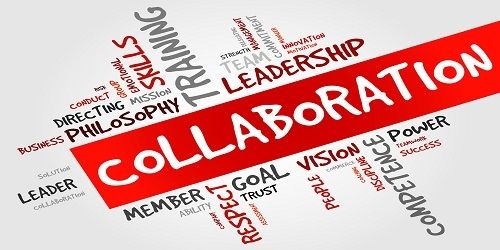We often fail to see parallels in life that can provide valuable insights and meaningful direction. Sometimes, stepping outside the box of our usual personal and professional lives can provide that Ah-Ha moment that helps set a new and successful course.
In this case, a project manager was experiencing a number of challenges on his project. He was also a drummer in a local rock band. He and his bandmates had an upcoming gig and were excited about the progress they were making on some new songs and a new set. For the PM, the excitement over the new musical opportunity helped diffuse some of the frustration he was feeling over the project difficulties. The music was a helpful distraction. He didn’t see the parallels that would have helped solve his project problems. He was treating the two as separate and distinct activities. Luckily, lunch with a colleague helped him gain some needed perspective from his music that he was able to apply successfully to his project.
Thanks to D.A. for the details on this case.
Related Article: Nine Steps to Project Success
The Situation
This project manager was running a $3 million, fourteen-month project to launch a new financial services product. The project was well into the development phase but experiencing some significant issues that were starting to impact the schedule and budget:
- The sponsor was vacillating over some key design features and wasn’t making the timely decisions needed to keep the project on track. The PM met with the sponsor on numerous occasions regarding the need for some firm decisions on the design matters, but the situation persisted.
- The users assigned to the project by the organization that would administer the product going forward kept changing the user interface requirements. The PM met with the users and their manager to resolve the problem, but they insisted that the requirements were evolving as the business processes were being developed. The interfaces would have to change accordingly.
- The project was having problems with code quality that had come to light during unit and integration testing. His developers insisted the test conditions and cases were the problem. The business unit testers claimed the code was the problem.
Frustrated with the project’s progress, the project manager invited a colleague to lunch to discuss the situation. The colleague was a consultant who specialized in application and technology architecture practices. In his former lives, he had been a software developer, database analyst, and project manager.
The Goal
The PM’s intent was to mine his colleague’s extensive experience to get some clarity on the problems he was facing on his project and perhaps arrive at a course of action that would get the project back on track. He had also volunteered to pick up the lunch tab.
The Project (Lunch)
The Project Manager and his consultant colleague arrived at their lunch destination and managed to get a quiet, out of the way table. During the initial small talk, the consultant mentioned that he had gone to a rock concert the night before. Apparently, it was an awesome, ear-splitting experience.
The PM talked about his involvement in music and the upcoming shows his band had arranged at a local pub. He talked about the two original songs they were working on, one his own, and the covers they were doing, the give and take, the trial and error that was needed and the hours of practice they went through to ensure a polished performance. He also mentioned they had dropped the bass player recently, and that had caused some friction. He was a great guy but didn’t have the talent they needed. The friction soon dissipated when they found a terrifically talented bassist to replace him.
Finally, they got around to talking about the project and the challenges the PM was having:
• A sponsor who wouldn’t or couldn’t make up his mind
• Changing requirements
• Code and test quality issues
The consultant listened and asked a few questions but otherwise let the PM have the floor. When the PM had finished describing his project challenges, the consultant paused for a moment, took a sip on his glass of draft, and then offered an interesting comment. “Delivering a great project is just like creating beautiful music. It doesn’t matter whether you’re Beethoven, the Beatles or Beyoncé. If you want to create beautiful music or a great project, you need the right ingredients and the knowledge and commitment to using them well. Take a look at your band. Who is writing the new songs?”
“I’m writing one of them. Our lead guitarist is writing the other one” replied the PM. “Why do you ask?”
The consultant explained. “When you decided to write that song, you had an idea of what you wanted to do, what sentiment you wanted to get across, the subject you wanted to cover, the tempo, a run of notes, maybe some lyrics. So, how does the final version of your song compare to what you first envisioned?”
The PM thought a moment. “It’s quite different from my first attempts. Much more lyrical. A slower tempo. The same subject, though.”
“And how did the song evolve from your first attempts to the finished product?” the consultant asked.
The PM pondered the question. “Well, I played around with the melody a bit. Fit some lyrics to it. Tweaked the melody. Changed the lyrics. When I had a rough idea of how it would fit together, I tried it out on Ron, our lead guitarist. We bashed away at it until it sounded pretty good and then introduced it to the rest of the guys. Collectively we refined it until everyone was pretty satisfied with the results.”
“Did you have conflicts over the song?” asked the consultant.
“Oh ya” replied the PM. “There was a lot of debate over the chorus lyrics. Ron and I got into some heated arguments. The other guys helped us work out the issues. The new bass player was a great mediator. Offered some terrific suggestions that got us unstuck. So where are we going with this anyway? Can we get back to my project troubles?”
The consultant went on to explain the parallels between creating that new song and running a successful project.
- Every song needs a composer who creates the initial idea. Similarly, every project needs an initiator, a sponsor, who develops the basic vision of the desired end result.
- A song usually needs collaborators, lyricists and musicians who help refine the initial idea into the final product. Likewise, projects need contributions from other executives, subject matter experts, technologists, business process designers, user experience experts and others to deliver a final solution.
- A song needs a conductor who organizes the other players and their notes into a cohesive whole. Projects also need a conductor, a project manager, to plan, organize, communicate and control project progress.
- Of course, a song needs musicians who have the skills, capabilities and availability to perform a piece on the scheduled dates. Projects also need contributors with the talents and availability to deliver the desired solution on plan.
- A song needs to be practiced by the artists who will perform the piece. That practice often includes revisions to the lyrics, music and tempo to suit the musicians and the intended audience. Project components also need to be practiced, or tested, to ensure they fulfill their intended purpose in the hands of the people who will be using them.
- Every song needs an audience, the final test. Likewise, projects have users who rely on a delivered capability to achieve the desired result.
The consultant offered the following analysis: “It seems the problems you’re encountering with your sponsor are directly related to the lack of collaborators he has available to help him sort out the issues. You’re the conductor, the organizer. Instead of leaving him to his own devices, bring the sponsor and the collaborators together to resolve the design issues that are causing the project grief. The requirements changes you’re experiencing seem to be the result of your staff working independently rather than collectively. Again, you’re the conductor. Don’t keep them at arm’s length. Bring them together. Have them share responsibility for delivering the process designs and the resulting interfaces. Finally, the quality issues sound to me like a skill problem. Find out if your software developers have the necessary language, business, and technical skills. Find out if the testers have the skills and tools to develop and administer the test plan, develop robust test cases and interpret the results.”
The PM thanked the consultant for his help. With new insights on the problems and an action plan of sorts, the PM returned to his office with a new bounce in his step.
The Results
The PM met with the sponsor about the product design issues and got his agreement to involve the marketing and sales executives in a design workshop run by an independent facilitator. The session was a terrific success. Problem #1 solved.
The PM then turned his attention to the requirements changes. He worked with the software development and product administration managers to bring their teams together and collaborate on the process and interface designs. The software developers prototyped the interfaces but held off on the final code until they signed off jointly on each design. That effort almost eliminated the cycle of continuous changes and the need for rework. Problem #2 solved.
The PM brought the software development manager and the testing manager together to discuss the consultant’s suggestion that a skill gap was behind the test problems. The developers were experienced and highly rated. The testers were new staff the manager had hired recently. He acknowledged that they probably didn’t have the business or testing expertise to do the job competently and agreed to assign and experience test lead to oversee progress. Problem #3 solved.
The project was delivered well under budget and three months ahead of plan. A great project really is just like beautiful music!
How a Great Leader Delivered
The PM’s first good move was seeking input from his colleague. That’s a great move on any project – having an exchange of ideas with someone who can offer unfiltered insights on any issues or successes, you’re encountering. A Project Mentor, so to speak. Finally, he took advantage of the insights offered by his colleague and leveraged the multiplying power of collaboration to see his project delivered successfully.
So, if you find yourself in a similar situation, think about all those outside interests you share, including music, and how they may be able to help you get the job done. Also, be sure to put these points on your checklist of things to do in future endeavors so you too can be a Great Leader. And remember, use Project Pre-Check’s three building blocks covering stakeholder, the decision management process and Decision Framework best practices right up front, so you don’t overlook these key success factors.
Finally, if you have a project experience, either good or bad, past or present, that you’d like to have examined through the Project Pre-Check lens and published in this blog, don’t be shy! Send me the details and we’ll chat. I’ll write it up and, when you’re happy with the results, Project Times will post it so others can learn from your insights. Thanks





